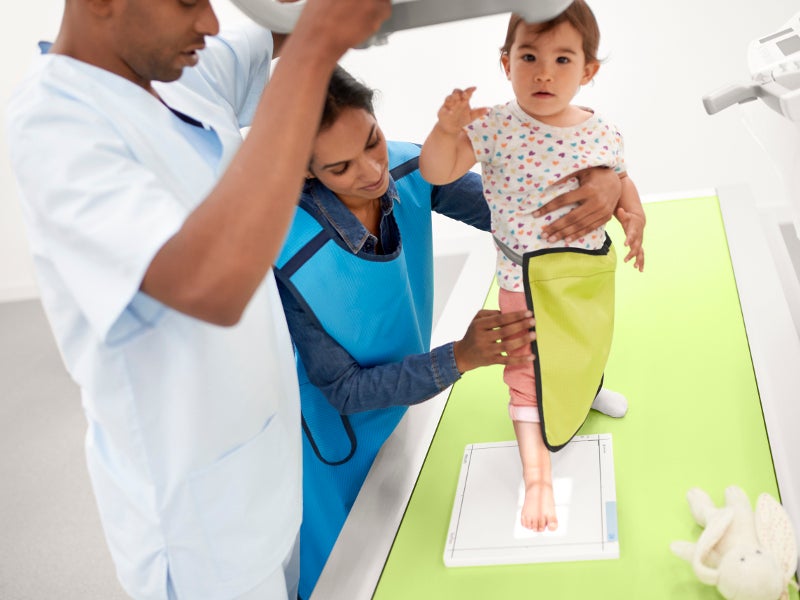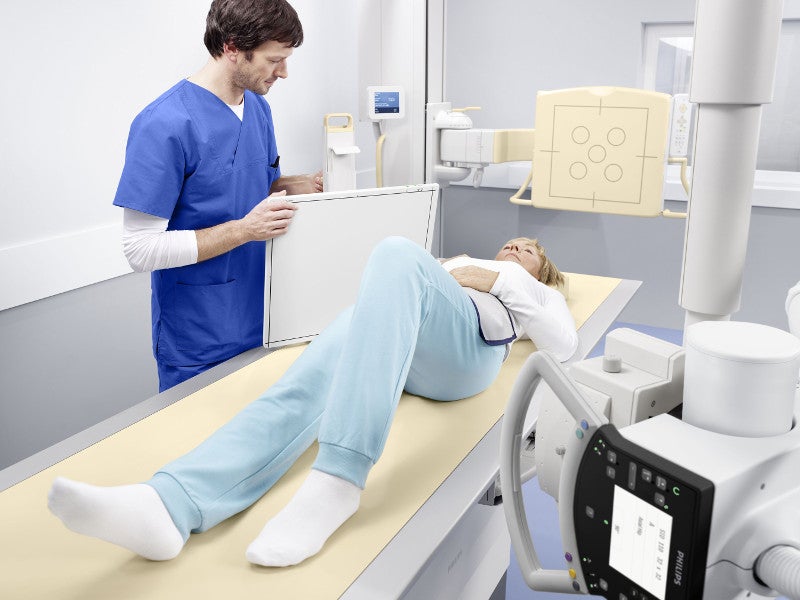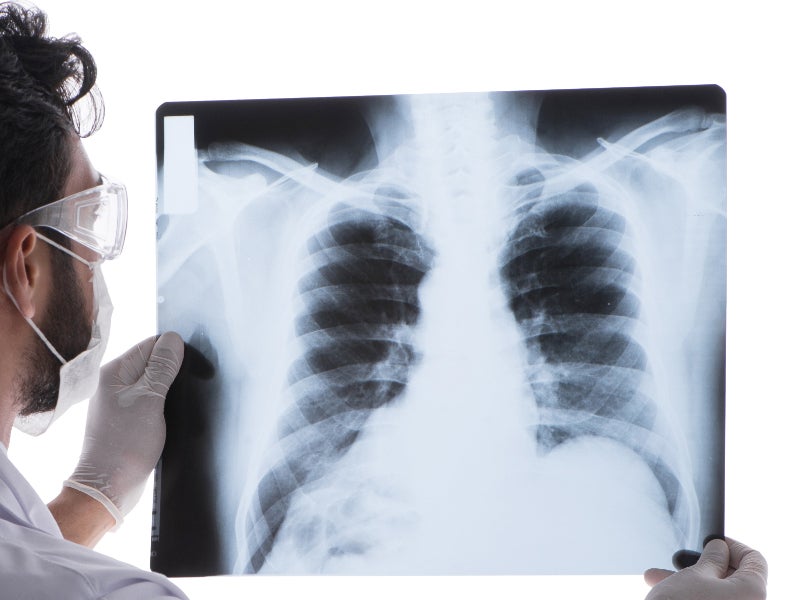ProxiDiagnost N90 is a dual-purpose digital radiography-fluoroscopy (DRF) system developed by Philips Medical Systems for routine X-ray and nearby fluoroscopy examinations of patients, including children.
ProxiDiagnost N90 received 510(k) approval from the US Food and Drug Administration (FDA) for clinical use in March 2018. The FDA classified the system as an image-intensified fluoroscopic X-ray system.
ProxiDiagnost N90 design and features
ProxiDiagnost N90 system comprises a floor-mounted, tilt-adjustable patient table and a fully integrated scanning unit, equipped with an X-ray generator and a flat panel detector for fluoroscopy.
The patient table can carry weight up to 300kg (660lbs) in static condition. The motorised table can be tilted to an angle between -85o and +90o and can carry up to 250kg (550lbs). It can be freely moved laterally, as well as longitudinally up to 185kg (407lbs) capacity. The tabletop is 83.3cm-high and measures 200cmx80cm.
Radiography device details
An X-ray generator is configured within the radiography device, containing X-ray tubes with a collimator and high-resolution displays. It can be used as a digital X-ray system by adding a ceiling-mounted tube along with a fixed or portable detector attached to a vertical stand.
The system uses a wireless, portable small or large X-ray detector, SkyPlate, based on amorphous silicon with Cesium Iodide (CsI) technology. The detector allows quick examinations with high patient throughput. The small detector measures 24cmx30cm with an image matrix size of 1500×1920 pixels, while the large detector is 35cmx43cm in size with 2330×2846 pixel image matrix.
Fluoroscopy device details
The fluoroscopy device in the ProxiDiagnost N90 system is equipped with a digital, flat-panel CsI-type detector, Pixium FE4343F.
Flat detector technology facilitates wider body coverage and provides superior distortion-free images, while the detector measures 43cmx43cm with 148µm pixel size. The image matrix size of the detector is 2840×2874 pixels and the tube voltage for fluoroscopy is between +40kV and 125kV.
Technology used in ProxiDiagnost N90
The system utilises a next-generation, multi-resolution image processing software, UNIQUE 2, which balances the image contrast and enhances details for improved image quality.
Eleva user interface is installed in the X-ray device for adaptive workflow and automated imaging process, allowing healthcare professionals to spend more time with patients. The SkyFlow technology avoids grid usage but provides grid-like image contrast, facilitating scatter-correction for non-grid bedside chest X-rays examinations in patients.
The device uses pulsed-controlled fluoroscopy (PCF) and grid-controlled fluoroscopy (GCF) techniques, which, along with intelligent exposure (IQX) in-pulse control exposure techniques, provide higher quality images in lower doses.
GCF enables 68% dose rate reduction in paediatric patients compared to PCF, based on the patient type and clinical use. Other features such as automatic filters and last image hold (LIH) in the system also streamline the dose management for both healthcare professionals and patients, including paediatrics.
Benefits of ProxiDiagnost N90 system
Slim and flexibly designed to carry out all the robust radiography and fluoroscopy operations in one room, the device can capture high-quality still images and videos and can also be used for examination of bariatric patients.
The dynamic detector technology of the device increases the ease of use for radiologists during an examination. The system is designed to have a small footprint and uncovered overhead space and table to improve patient accessibility.




